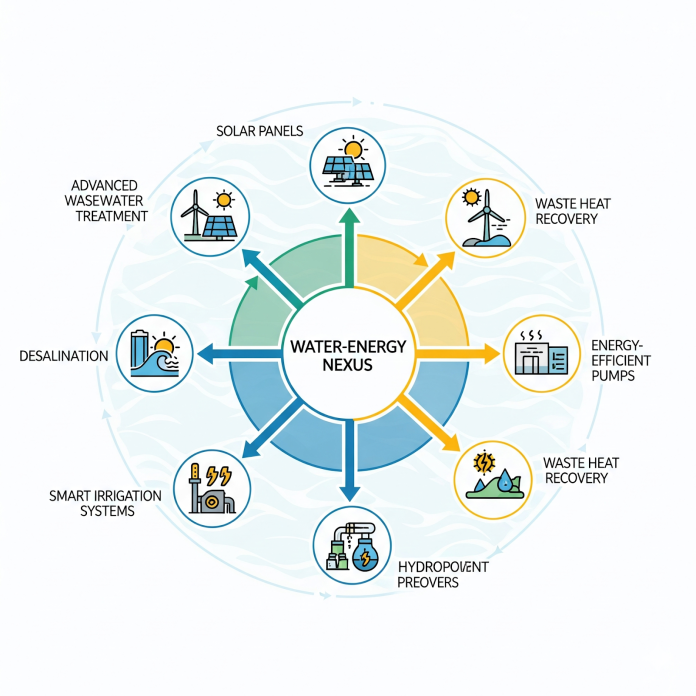Water-energy nexus technologies are designed to maximize the interaction between water and energy systems that are closely dependent on each other by enhancing water use for energy production and energy use for water treatment, distribution, and recycling. Environmental water scarcity, increasing energy use, more stringent environmental regulations, and climate change impacts are the main factors driving the adoption of their (technologies) that offer such advantages as increased efficiency, reduced emissions, lower prices, and improved resource sustainability.
Key Growth Drivers and Opportunities
Rising Global Water Scarcity: Water scarcity worldwide is pushing the implementation of water-energy nexus technologies at a faster pace. The main reasons are the great water use for different needs and the very high energy consumption by traditional treatment methods that create the necessity for energy-efficient, renewable-powered solutions, which will not only guarantee a stable supply and reduce expenses but also lower emissions and enable sustainable development over time.
Challenges
Water-energy nexus technologies market for the most is burdened with restrictions that include high upfront capital costs, technological challenges, low awareness levels in developing areas, as well as difficulties in combining renewable energy with the old infrastructure that can substantially slow the big-scale implementation of these technologies although they have sustainability benefits in the long run.
Innovation and Expansion
The FAO launched the iRTP-WS Workplan for 2024-2025
In October 2024, The Food and Agriculture Organization (FAO) successfully launched the Inter-Regional Technical Platform on Water Scarcity (iRTP-WS) workplan for 2024-2025, with the topic “Integrated Water Solutions: Navigating Climate Change and WEFE Nexus Dynamics.”
This event was a significant step forward in FAO’s efforts to develop cross-regional collaboration and spur innovation in water resource management, with a special emphasis on solving the complex water-related concerns posed by climate change.
P-LINK Launched the Water-Energy-Food Nexus Pilot Project in Thailand
In July 2024, A notable ceremony commemorated the launch of the “Intelligent Water System Model for Bung Khla District”. This effort seeks to increase water efficiency and quality for home consumption in communities around Bueng Kan Province, Thailand.
Thailand’s Office of Water Resources (ONWR), the Thai National Mekong Committee Secretariat (TNMCS), the Mekong River Commission Secretariat (MRCS), and the UN Office for South-South Cooperation (UNOSSC) collaborated to organize the pilot launch event, which marked a significant step forward in integrated water management.
Inventive Sparks, Expanding Markets
The water-energy nexus technology companies need to employ R&D in creative solutions, form strategic alliances, increase their presence in emerging markets, facilitate digital technology adoption, and implement sustainability-focused projects to not only support global climate goals but also to attract green investments. These are the key growth strategies that can bring about a significant rise for such companies.
About Author:
Prophecy is a specialized market research, analytics, marketing and business strategy, and solutions company that offer strategic and tactical support to clients for making well-informed business decisions and to identify and achieve high value opportunities in the target business area. Also, we help our client to address business challenges and provide best possible solutions to overcome them and transform their business.


